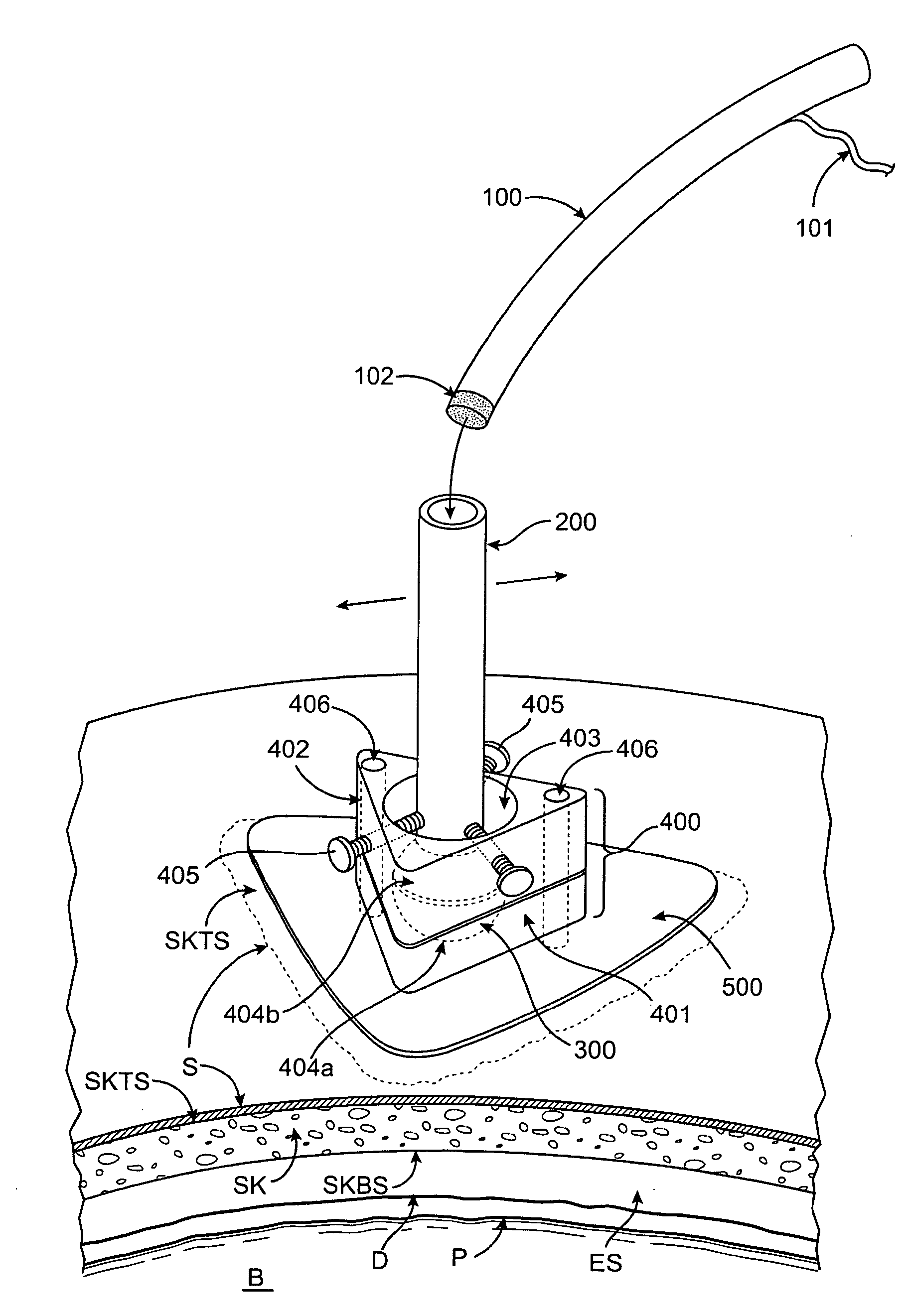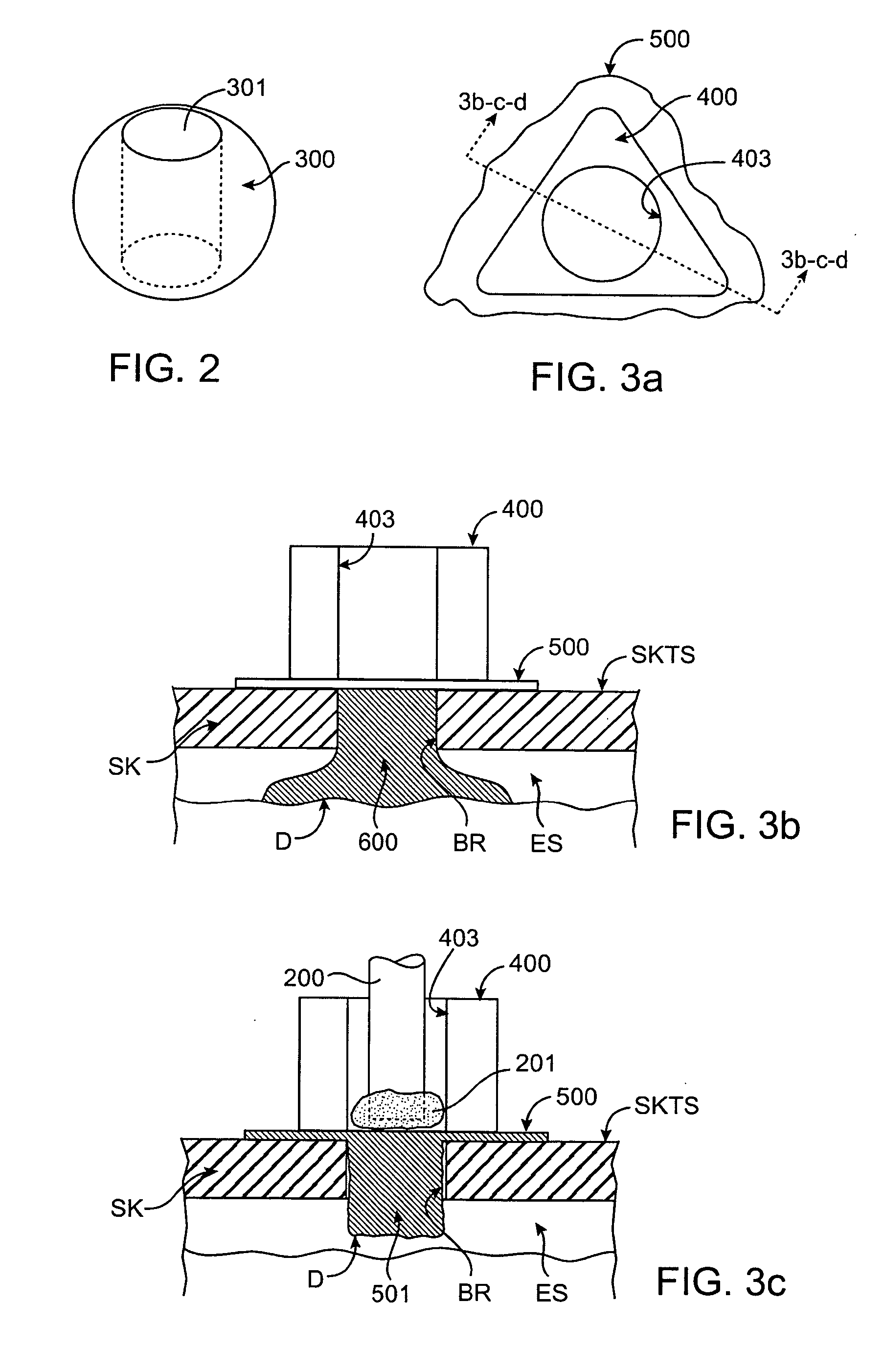Methods and systems for ultrasound delivery through a cranial aperture
a cranial aperture and ultrasound technology, applied in the field of medical methods and equipment, can solve the problems of affecting the treatment effect of stroke patients, unable to help patients with acute stroke, and almost nothing can be done to help patients, so as to reduce the non-linear acoustic effect of soft tissue, improve ultrasound energy transmission, and minimize or reduce the effect of non-linear acoustic effects
- Summary
- Abstract
- Description
- Claims
- Application Information
AI Technical Summary
Benefits of technology
Problems solved by technology
Method used
Image
Examples
Embodiment Construction
[0037] In one aspect of the present invention, a method for delivering ultrasound energy to a patient's intracranial space involves fixing at least one access device to the patient's skull, advancing at least one ultrasound delivery device at least partway through the access device, and transmitting ultrasound energy from the ultrasound delivery device to the patient's intracranial space. The access device may be fixed in place with screws through the scalp and into the skull, or alternatively the scalp may be retracted so that the base of the access device is located directly on the skull. If the scalp is retracted, it may be advantageous to also drill a hole through the skull near the center location of the access device to provide a route for minimal attenuation of the signals delivered from the ultrasound device to the intracranial space. In some embodiments, one hole is placed in the skull, and one ultrasound delivery device is used. In alternative embodiments, multiple holes a...
PUM
 Login to View More
Login to View More Abstract
Description
Claims
Application Information
 Login to View More
Login to View More - R&D
- Intellectual Property
- Life Sciences
- Materials
- Tech Scout
- Unparalleled Data Quality
- Higher Quality Content
- 60% Fewer Hallucinations
Browse by: Latest US Patents, China's latest patents, Technical Efficacy Thesaurus, Application Domain, Technology Topic, Popular Technical Reports.
© 2025 PatSnap. All rights reserved.Legal|Privacy policy|Modern Slavery Act Transparency Statement|Sitemap|About US| Contact US: help@patsnap.com



